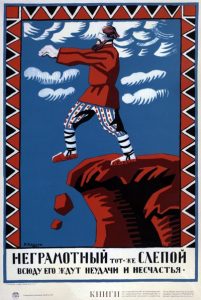This was my first time ever looking at post-soviet art, and I was blown away by the creativity and power of both the paintings and the sculptures. I was particularly moved at how the modern pieces provided a more truthful distorted echoed of soviet ideals. Most notably the works seemed to play at the façade of socialist realism, reinventing Soviet art into its more raw reality.
My favorite work from the group that we looked at was Avvakumov, Kuzin and Podyomshchikov’s Worker and Peasant which is a reimagination of a notorious Soviet sculpture we analyzed as a class earlier this semester. Tatlin’s Tower, which was supposed to serve as a monument for the Third International, was going to be erected in Saint Petersburg and have a presence in the city much like that of the Eiffel tower in Paris. The tower was to stand 400 meters high and be a symbol of modernity to all of Russia, showing industrial strength with its constructivist architecture. However, post-revolution Russia had no steel to lend to this artistic endeavor. It is important to note, this piece was made before socialist realism was indoctrinated, however its artistic meaning similarly was to show then post revolution Russia’s and eventually the Soviet Union’s industrial strength.
Worker and Peasant shows a more honest tower, one that’s unfinished and scaffolded in wood. Whereas Tatlin’s tower is meant to be a monument, Worker and Peasant is instead an unfinished ramshackle. Although Worker and Peasant contains the pieces for what could be a beautiful piece, similar to the Soviet Union in the 90s and 80s, it remains in disrepair, on the verge of collapse. The once great thought shows a different reality at the Union’s collapse.
I was wondering if any of you saw themes or allusions in these contemporary pieces?

